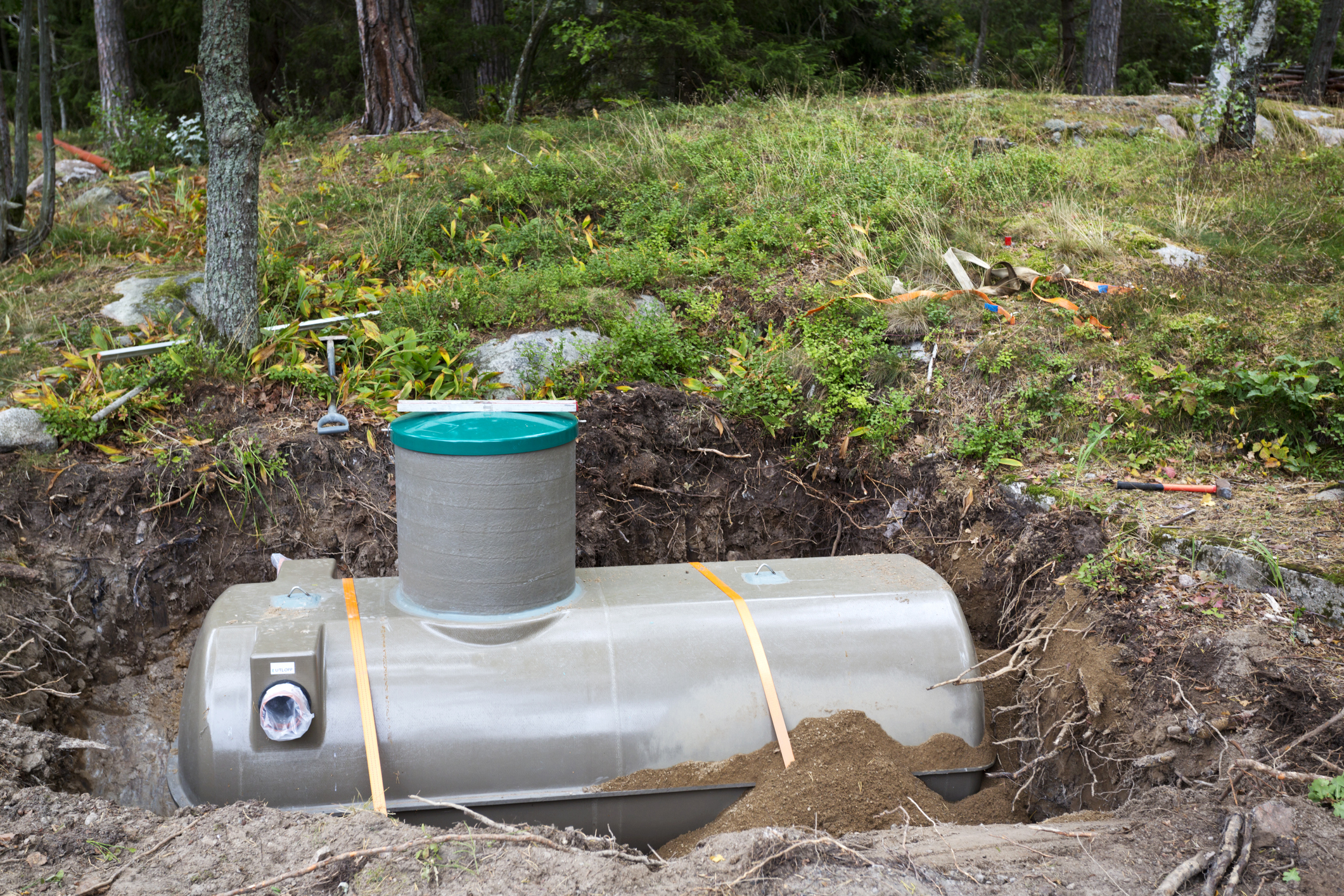Off-mains drainage systems: How to choose and maintain your private sewer
A comprehensive guide for rural homeowners on off-mains drainage solutions, including septic tanks, treatment plants, and legal compliance

Many rural properties and self-build plots are located beyond the reach of mains drainage systems. For these homes, off-mains drainage is essential to manage wastewater safely and sustainably.
Choosing the right system, understanding maintenance requirements, and complying with regulations are critical to protecting both your property and the environment.
“Off-mains drainage is not simply a DIY project - selecting the right system and maintaining it correctly is crucial to avoid costly issues and regulatory penalties,” explains Chartered Surveyor, Ian Rock FRICS.
This guide provides a clear overview of the main off-mains drainage solutions, their advantages and limitations, and legal responsibilities for homeowners.
Private drainage options
Cesspits (cesspools)
A cesspit is a sealed underground tank that collects wastewater until emptied by a licensed contractor. Modern units are vented to prevent gas build-up and typically hold 18,000 litres or more.
“Cesspits are a last-resort option. They do not treat wastewater and require frequent emptying, which can be costly,” says Rock.
Cesspits are banned in Scotland and heavily restricted in the rest of the UK.
Bring your dream home to life with expert advice, how to guides and design inspiration. Sign up for our newsletter and get two free tickets to a Homebuilding & Renovating Show near you.
Septic tanks
Septic tank separate solids from liquids, allowing solid waste to decompose while liquid effluent flows to a drainage field. They are the most common off-mains drainage solution for rural properties.
“Septic tanks are reliable, low-maintenance, and cost-effective. They usually only require emptying once a year, depending on household size,” notes Rock.
A percolation test is necessary to ensure the soil can safely absorb the liquid discharge.
Domestic sewage treatment plants
Treatment plants use air or mechanical systems to accelerate bacterial breakdown, producing higher-quality effluent. Some systems are clean enough to discharge directly into a watercourse.
“Treatment plants reduce the frequency of emptying and are ideal for challenging soil conditions. While more expensive to install, they save money on long-term maintenance,” explains Rock.
Drainage fields and mounds
A drainage field disperses treated wastewater into the soil. Where soil is less permeable, a mound may be required to provide adequate filtration.
“Proper design and siting of drainage fields is critical. A percolation test ensures the land can handle wastewater safely,” says Rock.
Reed beds
Reed beds can act as a natural filtration system when paired with a septic tank or treatment plant. They rely on microorganisms to digest waste and can improve water quality while supporting local wildlife.
“Reed beds are environmentally friendly, but require adequate space and careful planning,” explains Rock.
Regulations and legal responsibilities
Replacing or installing an off-mains drainage system generally requires Building Regulations Part H approval, and sometimes planning permission.
“Any property discharging untreated effluent into a watercourse is no longer compliant. Upgrading to a treatment plant or drainage field is essential to meet current regulations,” warns Rock.
All systems must be registered with the Environment Agency or the relevant local authority. Small domestic discharges may be exempt, but confirmation is recommended to avoid fines.
For most rural properties, a septic tank or treatment plant combined with a drainage field provides a safe, effective, and low-maintenance solution for off-mains drainage.
Proper selection, installation, and maintenance are essential for legal compliance, environmental protection and for lower drainage costs.
“Choosing the right off-mains drainage system and keeping it properly maintained is critical for peace of mind and protecting your investment,” concludes Rock.
Tim was an expert in sustainable building methods and energy efficiency in residential homes and wrote on the subject for magazines and national newspapers. He is the author of The Sustainable Building Bible, Simply Sustainable Homes and Anaerobic Digestion - Making Biogas - Making Energy: The Earthscan Expert Guide.
Tim's interest in renewable energy was first inspired by visits to the Royal Festival Hall heat pump and the Edmonton heat-from-waste projects. Moving to a small-holding in South Wales fanned his enthusiasm for sustainability. He went on to install renewable technology at the property, including biomass boiler and wind turbine.
He formally ran energy-efficiency consultancy WeatherWorks and was a speaker and expert at the Homebuilding & Renovating Shows across the country.

